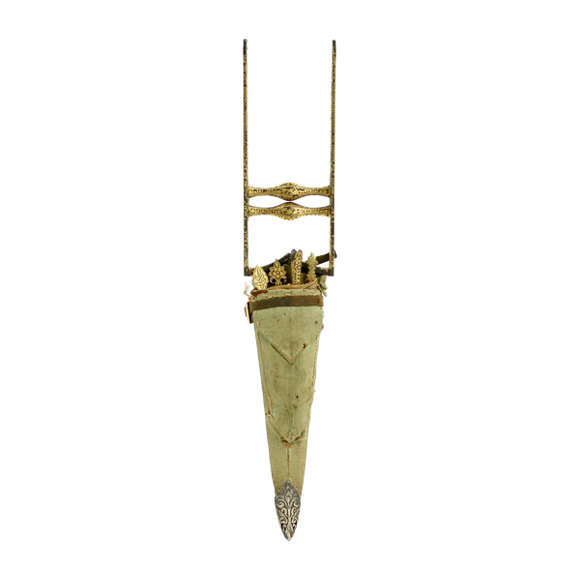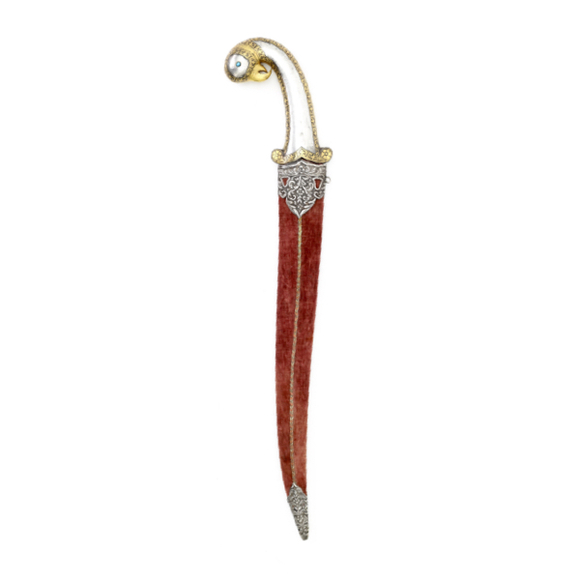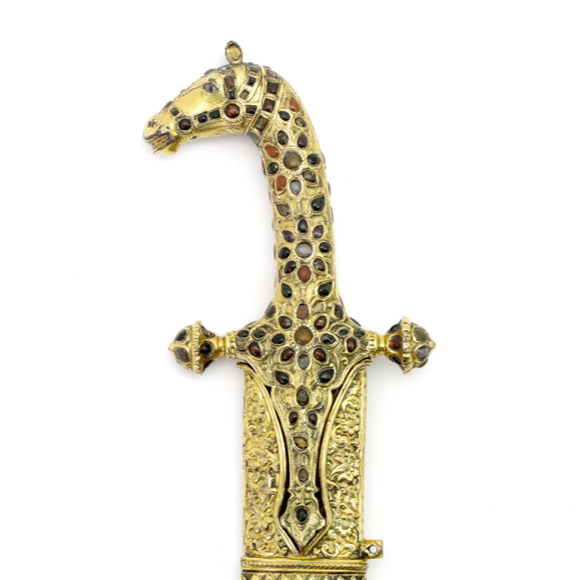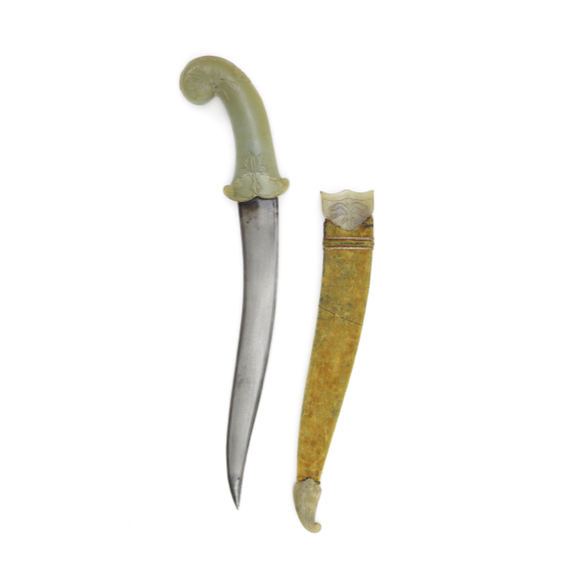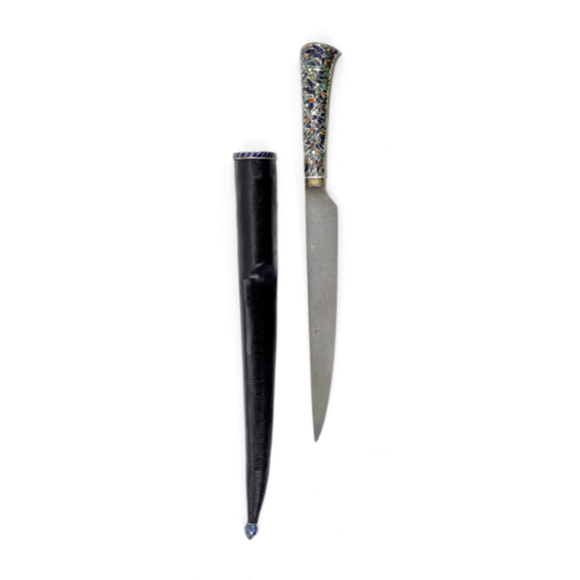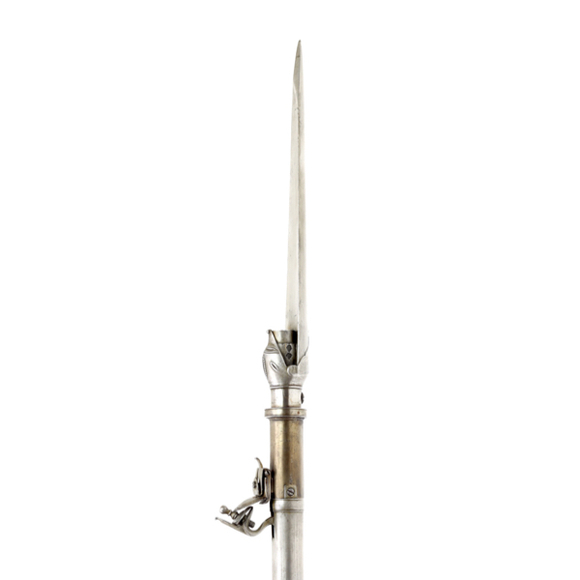With a fine wootz blade with a pronounced center ridge.

Outer katar 42 cm
Inner katar 37.5 cm
Outer katar 329 grams
Inner katar 281 grams
Iron, steel, silver
Alwar, Rajasthan
North India
Circa 1900
Introduction
Occasionally, I buy items just to show what they really are because they are often misrepresented.
Many later Indian arms were not made "for the culture" but instead for a growing demand for exotic goods in the Western world. The very best items of this genre are very collectible and are of a quality that matches that of the arms made for local royalty and probably made by the same craftsmen.
In other cases, items appear to have been made by people who were not usually arms manufacturers. Designs are somewhat off and while they may look the part from some distance, workmanship up close is often not that good. Some of these pieces get their appeal from being popular "conversation pieces" like the many scissor katar that are today often passed off as vicious weapons used by Indian warriors, but in reality were nothing more than tourist curios.
Some do have gold or silver overlay, which in some cases have been done by koftgars who may have also worked on actual arms.
This katar in katar
An interesting curio grade katar of which the scabbard is in the form of a larger, hollow katar. The outer "scabbard katar" is rather thick but still not so thick as to render it useless. Some bona fide fighting katar kan be found with blades of similar dimensions. Likewise the inner katar is thin, but still kind of usable. Where the makers clearly dropped the ball is the handle bar design; on both the handle bars are too close together for a good grip.
The silver koftgari overlay is not top quality but it is not bad, either. Many curio items have far coarses decoration which leaves me to believe these were done by an actual koftgari artist who had also worked on arms. Many of them were in need of new sources of income after the British purge on arms since the 1857 mutiny.
Comparable examples
I purchased this katar because an almost exact piece is published by the famous London dealer William Ockleford Oldman. It appeared next to a scissor katar in his "Catalogue of Ethnographical Specimens, Eastern Arms, Etc. No 22" of January 1905.

We see it under number 26, it was described in the catalog as:
"25. (2850) Dagger; "Katar", blade opens on pressing the grip, dec, silver, modern. Alwar. £ 1/5/0
26. (2874) Ditto, one contained within the other, dec, silver, modern. Alwar. £ 1/10/5"
The tradition of making these goes a little further back, though. Lord Egerton, writing in 1880, mentioned another, gilt example:
888.* Two Daggers; "Katár;" one concealed within the other. The larger blade is hollow and acts as a sheath to the smaller one, the sideguards of which are hollow, and conceal those of the outer Katár. The side guards are covered with inscriptions raised and gilt. The sheath is ornamented with gilt leather, cut in delicate geometrical patterns over a background of coloured tinsel. Gold mounts. Alwar, L. 18 in. (PL X., No. 383.) (8660 -'51.)
-Lord Wilbraham Egerton of Tatton;
An Illustrated Handbook of Indian Arms:
Being a Classified and Descriptive Catalogue of the Arms Exhibited at the India Museum:
with an Introductory Sketch of the Military History of India.
W.H. Allen, London. 1880. Page 109.
The '51 means it was acquired in 1851, predating the appearance of the Oldman piece by some 54 years.








The style typical of Kutch, the execution far above what is normally seen on work from that area.
Nice and complete with opaque green hilt and scabbard mounts.
With designs of animals, often attributed to Lucknow, north India.
A what? Yes exactly. An extremely rare piece, the only example I am aware of in published collections at…

